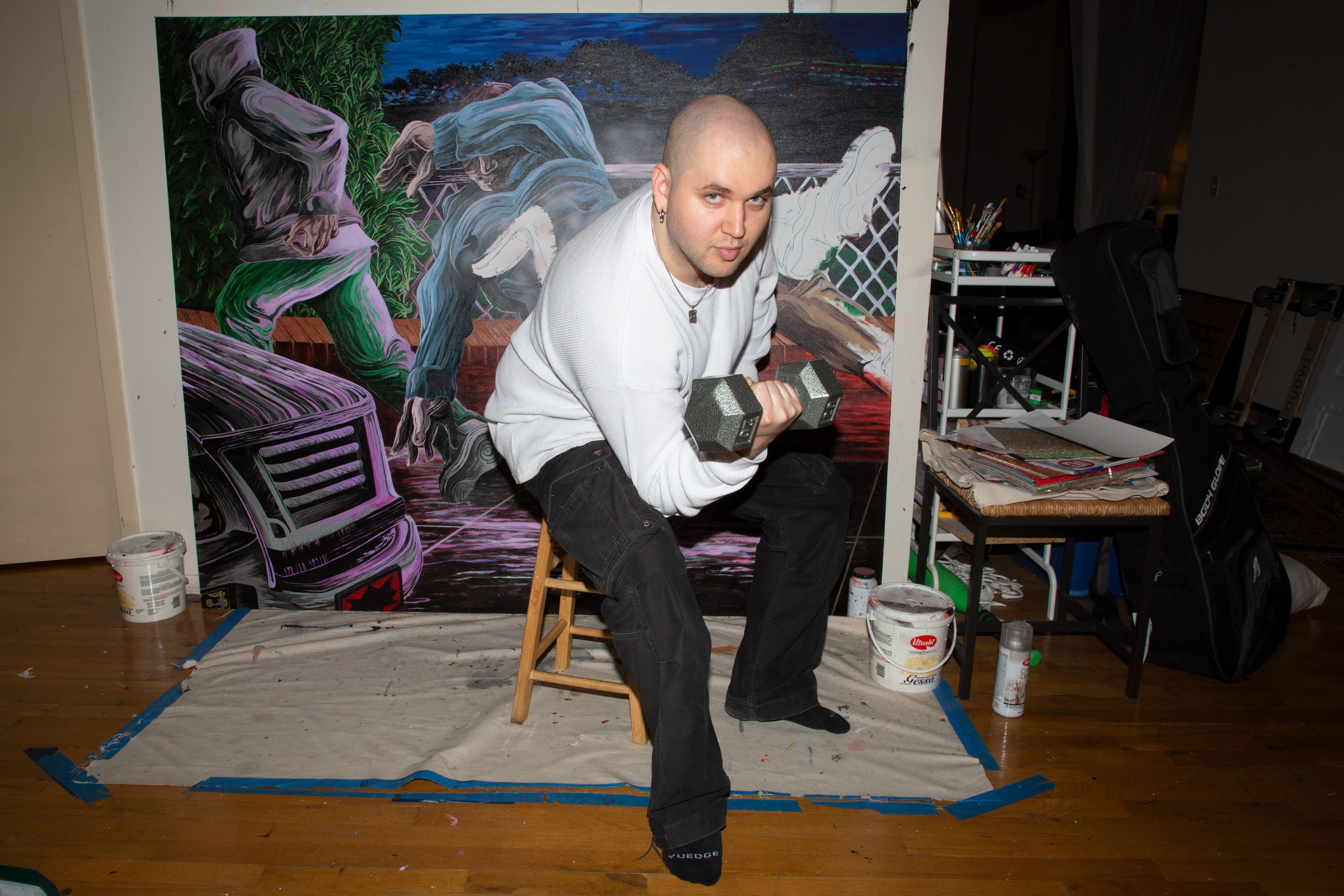Dani
You just told me that you're just now learning how to paint, but you've definitely been painting for a while, so what do you mean when you say that?
Sam
I just feel like I am just starting to understand, in terms of the narrative and in terms of the subject matter, what makes sense to me, the things I wanted to paint. From 2019 through some of 2022, I was really leaning on biblical storylines or already established storylines, and I felt like I had a hard time attaching my identity to the work. I feel like now I’m making a good jump. I feel like I’m making jambalaya, I feel like I’m making a sweet butternut squash curry right now — all the ingredients are coming together.
"I feel like I’m making jambalaya, I feel like I’m making a sweet butternut squash curry right now — all the ingredients are coming together."
I think before, I was trying to understand compositions, I was trying to understand how to create pictures that were figurative and included landscapes, I was trying to figure out how to incorporate certain biblical or storylines from my life into works in a way that was authentic and seamless and something that people could live with. And I feel like, narrative-wise, everything wasn’t balancing. Now, I’m balancing my colors and my structures really well. I’m very technical.
Dani
So that jump from biblical storylines to something that's more personal to you — is that something that developed alongside your technical advancement or was that more of a mental switch?
Sam
I would say it just developed with the technical, understanding how to make forms work. I’ve always been making very flowy, kind of liquid-looking pictures, but I wasn’t able to make them look solid — they just looked to me like weird, psychedelic mushroom trip paintings. As I was understanding myself and understanding what I wanted out of my career, the technique was developing alongside the more personal narratives and becoming more cohesive — before they were separate but now they feel like they’re one.
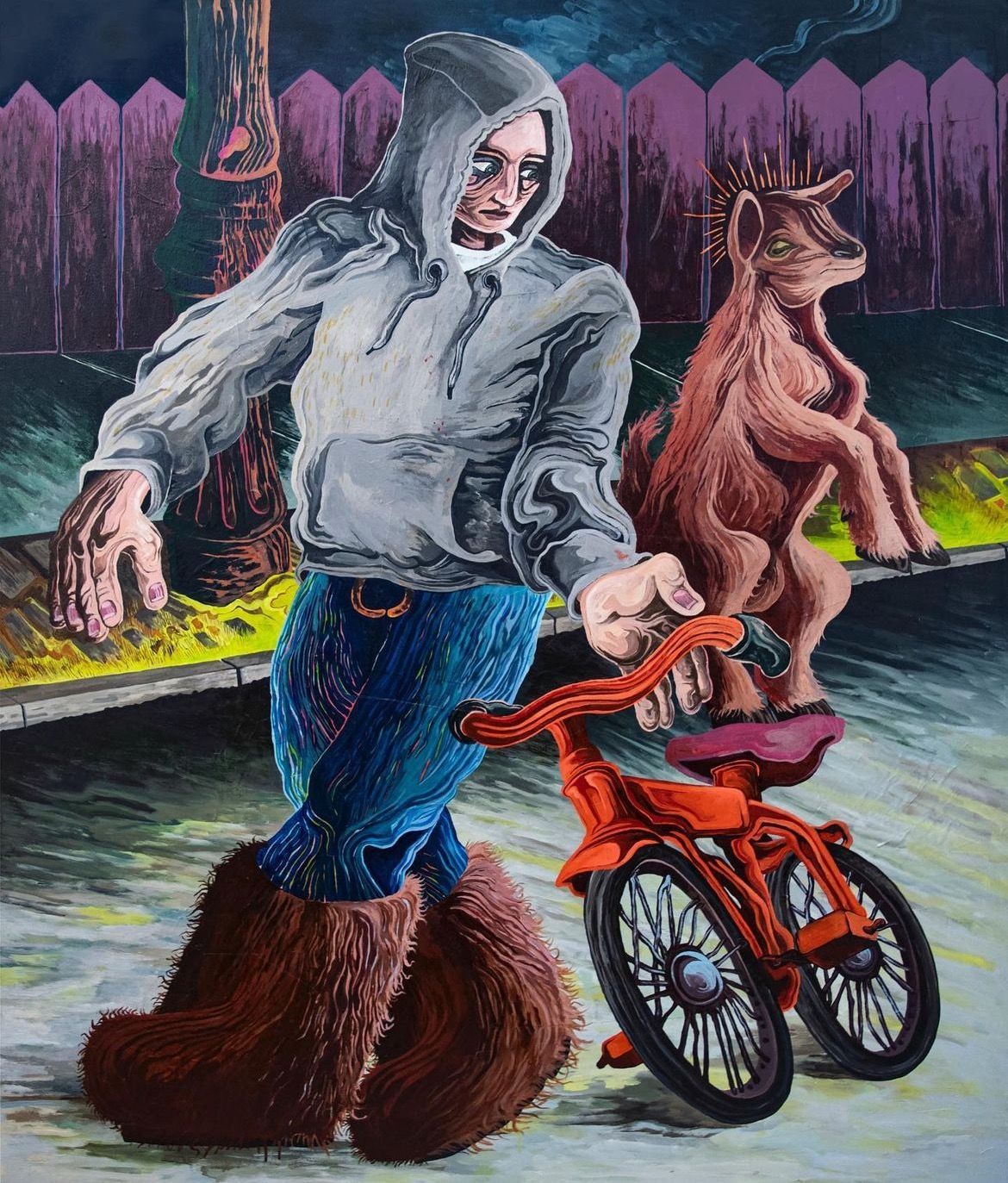
Dani
Right, I feel like you can't have one side of that growth without the other. It's cool to see it all coming together. You mentioned drawing from biblical texts, but I know you also take a lot from your upbringing in DC. How does the city manifest itself in your work?
Sam
DC is weird, because it's a city with some serious juxtapositions, some really big contrasts. On one hand, it’s the nation’s capital. There’s a lot of administrative work that happens there, so there’s a lot of people who seem highfalutin or who would have some sort of social class structure they adhere to. And then at the same time, DC is a historically Black city with some areas that have been drastically underserved by the city government. So much of the city’s culture has been stemming from Black people in DC for hundreds of years. Of course, I’m speaking on a vast spectrum of experiences so there’s a lot of room for these experiences to lie somewhere in between. But you’re getting a lot of different, colliding narratives of humanity happening at the same time. I try my best to show that in the work by showing people acting out these biblical storylines or different types of people clashing with each other in different ways. I’m also showing the immense amount of trees — DC is weirdly suburban in some areas. I’m trying to show it the best I can through visceral, personal memory. There are obvious symbols like the Foams or the New Balances, but the not-so-obvious symbols are the feeling of seeing weird social chaos happening all of a sudden. It’s not like New York — New York has its own social chaos, but New York social chaos is already reflected in a lot of pop culture. DC has less of that, and I want to be able to speak on that through my work.
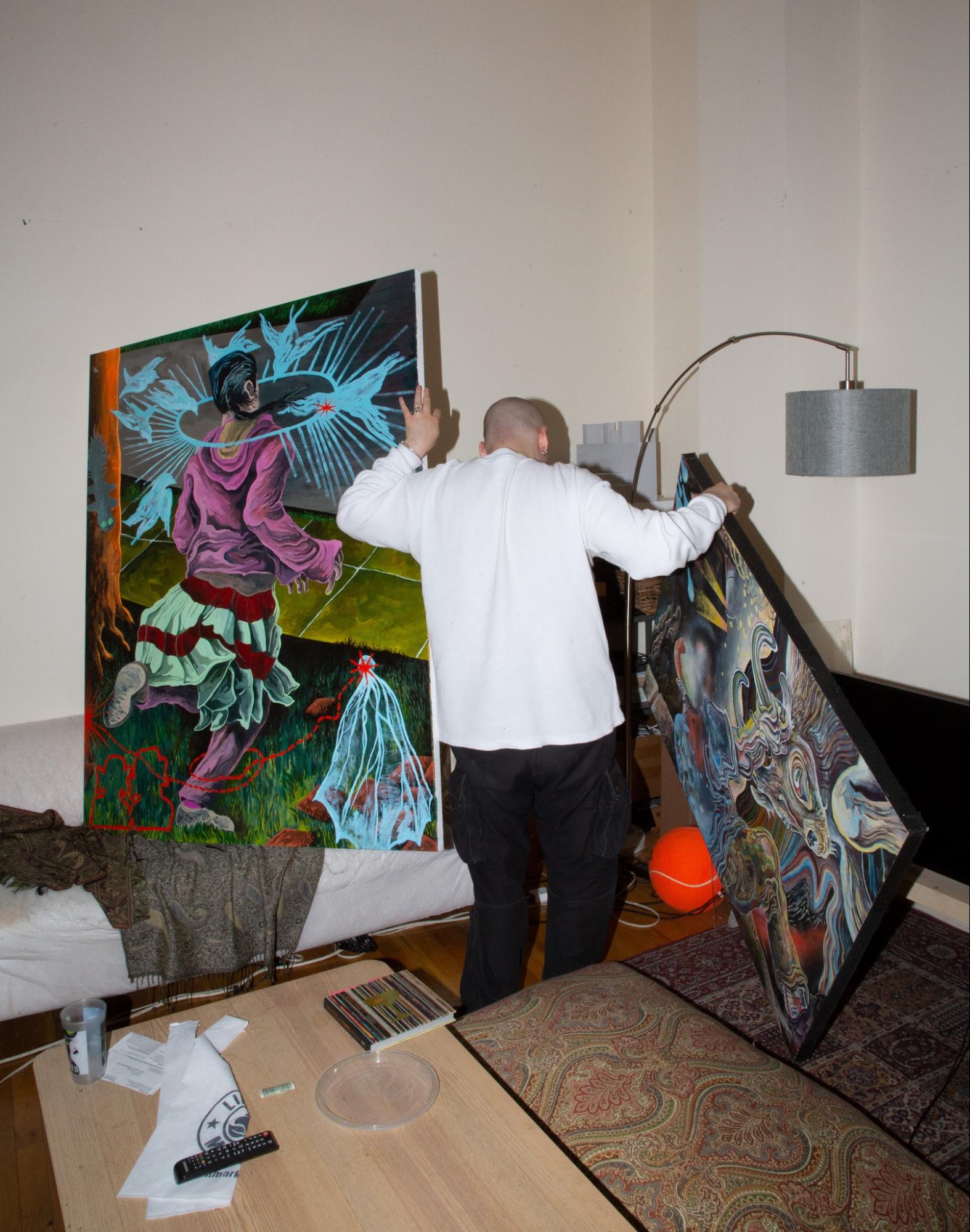
Dani
Definitely. You've been in New York for eight years now — have themes from your time here seeped into your work yet?
Sam
Right now, I'm more interested in DC, but New York is always going to be there. If I’m going to pick a place in New York that I would draw from it would be Queens, like Roosevelt Avenue or Jackson Heights or something — I just love those neighborhoods. I think I mostly take from the architecture, like the weird gates on houses that you find in East Flatbush or custom additions that people add to their homes.
Dani
What's it like being a part of the artist community here? Your roommates and I'm sure a lot of your friends are all artists — are you taking from them artistically?
Sam
I'm really into what other people are doing for sure — how can you not be? If they're your friends and you care about them and they talk to you about their work, it's gonna rub off on you. I don’t believe anyone is doing their own thing anymore. Not unless you’re in the middle of Siberia, twiddling sticks, cutting the heads off of muskrats and eating their brains in front of your children — you’re not doing your own thing. The whole idea of being original is very overrated. Everybody has their sources. Everybody has their influences. How do you put it together?
"I don’t believe anyone is doing their own thing anymore. Not unless you’re in the middle of Siberia, twiddling sticks, cutting the heads off of muskrats and eating their brains in front of your children — you’re not doing your own thing. The whole idea of being original is very overrated. Everybody has their sources. Everybody has their influences. How do you put it together?"
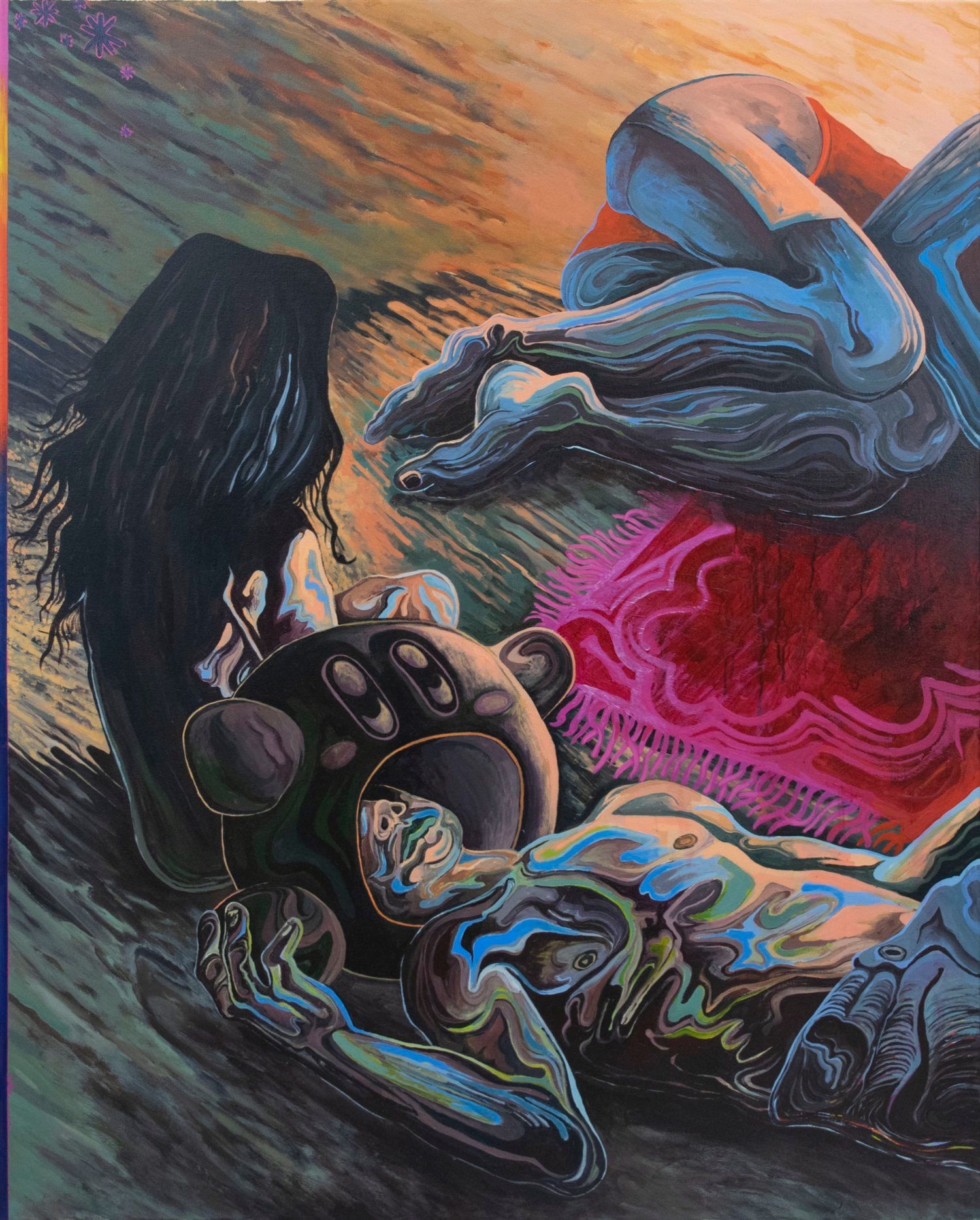
Dani
For sure. I think you've done a really good job of that since I really haven't seen anything like your work. We were talking about your technique and your flowy brushstroke, but what's really striking to me looking at your paintings right now is your color. There's such a difference between this green and purple, kind of joker-esque, figure right behind you and the extremely saturated red in THE RAIN FALLS ON THE WIND WHEN THE HEAVENS TURN SCARLET. What's your process like when choosing your colors?
Sam
That red painting I made with my friend Sydney Vernon, another painter from the DMV. The colors depend a lot on the narrative that we’re basing it on. Sydney came to me with this story about the Whore of Babylon, who is a character from the Book of Revelations in the New Testament. From there, we sketched the composition and interpreted the colors together. We decided to make her the central figure of the painting and colored it scarlet, since the story said the Whore of Babylon would show up on this scarlet beast. So we wanted to make the main color scarlet, we wanted to make the world scarlet. I was also really inspired by the forest fires that were happening in Northern California at the time that were making the sky red. I make a lot of color studies prior — I do them digitally and just go off my gut. I go off of what feels right to me.
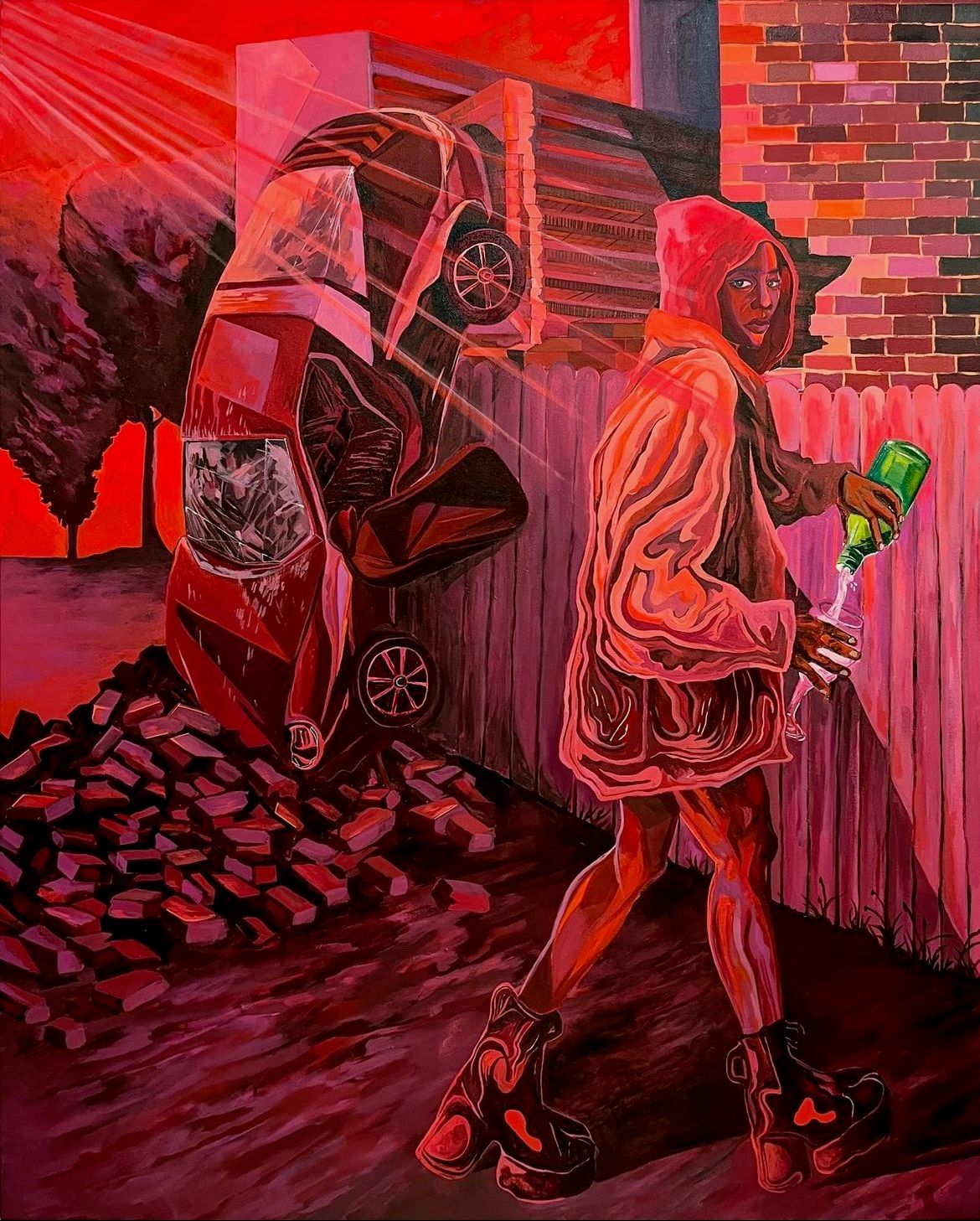
Dani
I like that you talk about the painting as a world. I think that relates to how you've previously described artists as prophetic or having the ability to paint history before it happens. We've talked a lot about how memories show up in your work, but I also want to explore this future-facing aspect of your practice.
Sam
To me, the whole idea of making art is that it's the intersection between technology and prophecy, engineering and prophecy. So the idea is you’re conjuring up objects that give off an energy. The fact of the matter is that everything that has been made recently was inspired by a movie, a comic book, a painting, a TV show, etc. None of these things are original. So when Elon Musk made Neuralink, it was because he watched Gattaca. Gattaca comes from the mind of a human being writing a story because it comes from their heart. And so therefore all these science-fiction storylines that end up becoming reality are prophecies. They were conjured and assembled by someone, and then someone else who had the power to create those things did it. It’s not just Elon Musk. Elon Musk is barely an innovator — I’m using him as an empty example. You can think of someone who actually does the work. They watched the movie and they said “let’s do it.” And that’s really it. So when you’re making art, you are going to be prophesying, because you’re coming up with storylines that no one’s ever thought of before, which then becomes part of the ecosystem.
